We turned down Brushy Fork Road in search of Red-tailed Hawks (Red-tails). The rolling hills of southwest Illinois are an ideal habitat for them. The pastures and fingers of trees that follow watercourses and ridges provide a home for small rodents and places for hawks to perch and watch.
I had recently read The Peregrine by J.A. Baker where he describes his version of intense birdwatching as “hawk hunting.”
“Hawk-hunting, sharpens vision. Pouring away behind the moving bird, the land flows out from the eye in deltas of piercing color. The angled eye strikes through the surface of dross as the oblique axe cuts to the heart of a tree. A vivid sense of place grows like another limb. Direction has color and meaning. South is a bright, blocked, place, opaque and stiffling; West is a thickening of the Earth into trees, a drawing together, the great beef side of England, the heavenly haunch; North is open, bleak, a way to nothing; East is a quickening in the sky, a beckoning of light, a storming suddenness of sea. Time is measured by a clock of blood. When one is active, close to the heart, pursuing, the pulse races, time goes faster; when one is still, waiting, the pulse quietens, time is slow. Always, as one hunts for the hawk, one has an oppressive sense of time contracting inwards like a tightening spring. One hates the movement of the sun, the steady alteration of the light, the increase of hunger, the maddening metronome of the heartbeat. When one says “ten o’clock” or “three o’clock,” this is not the gray and shrunken time of towns; it is the memory of a certain fulmination or declension of light that was unique to that time in that place on that day, a memory as vivid to the hunter as burning magnesium. As soon as the hawk hunter steps from his door, he knows the way of the wind, he feels the weight of the year. Far within himself, he seems to see the hawk’s day, drawing steadily towards the light of the first encounter. Time and the weather hold both hawk and watcher between turning poles. When the hawk is found, the hunter can look lovingly back at all the tedium in misery of searching, and waiting that went before. All is transfigured, as though the broken columns of a ruined temple, had suddenly resumed their ancient splendor.”
There were four of us in the Subaru, scanning a mottled gray sky and the trees for hawks. We were not as intense as J.A. Baker, but we did spend an entire day focused on hawks, and in the process, we became in tune with them. We turned a corner, and I heard "Abietacola on the right. Slow down, slow down." Trying to catch a hawk is intense, and many things have to go right. The bird needs to look in the right direction and have a clear line of sight to the trap. You cannot be too close to a house or to the bird. The road needs to have little traffic, and you have to drive at the proper speed. Not too fast and not too slow. You cannot stop. We mostly fail. Our success rate is around 15%.
This particular dark subspecies of Red-tail — Abietacola — happens to cooperate. We slow to a crawl, and the lead researcher slowly opens the door and sets a wire cage with a mouse inside in the grass by the side of the road. We keep moving, and the hawk stays in the oak tree about 50 yards away. He is looking in the direction of the trap. We drive down the road about 500 yards, turn around, and watch.
After 5 minutes, the hawk flies down toward the trap. He briefly hovers and lands on the trap and is motionless. His feet are encircled in tiny monofilament loops. He flaps his wings and falls to the ground. We caught him! We fly into action and arrive at the trap within seconds. The intensity builds. People move quickly to gather equipment and get to the hawk. I step out of the car and see the hawk lying on the ground. A blanket is thrown over him to calm him down, and we quickly remove the loops from his feet. This is where the experience takes on a surreal quality. The hawk is being held upright by the legs, and I am standing three feet away. My domesticated human world is face-to-face with wildness. This being radiates life; he shines in the dappled light, and he seems to be vibrating like a bee. He is stunning. I cannot take my eyes off of him. He has spread his wings, opened his mouth, stuck out his bright pink tongue with a hole in it, and is staring at us with wild eyes.
The eyes draw me in. I watch his pupils dilate and expand in response to shifting light levels. He is looking right into my eyes. His eyes are a mix of brown, white, and black. They are brilliant and appear to be lit from within. He fixes his intense stare on whoever is closest to him, but he appears to be calm. He does not struggle or vocalize the entire time. A leather hood is quickly placed over his head to limit stress.
With the hood on, it is easier to appreciate the rich dark brown color in his feathers, bright yellow scaly feet tipped with menacing black talons, and his bright white chest. Up close, the hawk is thrown into sharp relief. I usually see them perched on trees and posts off in the distance. Now, presented with one at arm's length, the abstract hawk becomes an individual with a personality. I have so many questions. Where did he come from? Does he have a mate and offspring? Where is he going? What is his life like?
I can picture him delicately feeding tiny white fluffy chicks. Allopreening his mate and careening through the sky in an aerial duet as part of annual pair bonding. He has complex relationships and is more intelligent than we will ever know. However, we know a little more about Red-tails every year. Modern technology and curious researchers are hard at work probing the mystery that is a Red-tail. That is what I am witnessing now. Rulers and calipers are used to measure feather, beak, and leg length. We weigh him and remove a few small feathers for DNA sampling. His hood is removed, and pictures are taken as the final step in data collection.
Now, it is time to release him. My brief interaction seems so fleeting. I entertain thoughts of taking up falconry as I watch the hawk being held at arm's length. I try to capture the release in slow motion video, but I misjudge the bird's trajectory, and he quickly passes through the frame as he flies up and perches in a nearby tree. He turns and looks at us and ruffles his feathers. He appears to shake out all the indignity and stress in a flash, and he turns his head and looks out across the dormant weather-beaten pasture. What is he thinking at this moment? Maybe some movement in the grass caught his attention. He can see eight times better than we can, including seeing more color and infrared. He may be picking up the heat waves from a vole in the pasture.
Two years of trapping have produced data on 71 hawks for this team of researchers. The goal is to learn more about the origins of wintering Red-tails in Illinois. There are 12 subspecies, and by collecting feathers and analyzing hydrogen isotopes, it is possible to discover the latitude where the hawk spent the breeding season. Another goal of the research is to develop a better understanding of how climate change influences migration. Recent winter surveys indicate that Red-tails are migrating less due to warmer winters.
Red-tails are common due to their ability to adapt to humans and an altered environment. They are generalists that tolerate us and can survive in our midst. This is the only way an animal can be abundant now. Our environment is too degraded for sensitive specialists to thrive. Red-tails are the hawk equivalent of Canada Geese, Starlings, Mallards, and House Sparrows.
After this promising start, we are confronted with the stark reality that Red-tails are wary birds. We spend the rest of the day engaged in a sort of chess match with the hawks. We cover a lot of miles, set a lot of traps, and watch Red-tails respond in various ways. This mostly entails some version of hovering over or standing near the trap and looking at the mouse. We did not catch another hawk. We did get to spend some quality time with several mice. Two layers of wire protected them, and they seemed to know that they were safe. The traps are pulled within 15 minutes, and several mice were rotated through the traps to limit their exposure to cold weather.
At one point, we drive past a large restored prairie. A section of it has been burned. There are hawks everywhere. A Rough-legged Hawk (Ruffy), two Northern Harriers, a Kestrel, and several Red-tails are flying over or perched nearby. This is the most hawk activity we have seen all day and highlights the importance of habitat quality and quantity. The birds are there in search of small rodents hiding in the prairie. They must have been successful in finding them, as our mouse in a cage did not attract any interest. At this point, the sun starts to set, and our adventure is coming to a close. We start to make our way back north. When we get on the interstate, I start seeing Red-tails perched in the trees along the median. Based on the day's close encounter with a Red-tail, I feel I have a superpower now as I can zoom in and visualize each glorious bird in great detail.
Spending an entire day focusing on hawks highlights the fact that we tend to give little thought to the needs of wildlife. Hawks are left to make their way in the margins. Little scraps of degraded habitat. For hawks, like red-tails, their needs are pretty straightforward. They need small rodents to eat.
If we tolerate a little messiness in our yards, parks, and countryside, we could have a lot more hawks around. I have voles and mice in my yard. This fall, the voles started eating my carrots. My initial reaction was to think that I needed to do something, and then I realized that it was okay. If I want hawks and screech owls to move into our yard, I need to have voles. Losing a few carrots is a small price to pay. If we all look for ways to give back a little, we can bring more life into our lives. We can experience more of the richness, wonder, and awe that life has to offer. We can become completely absorbed in the brilliant eyes of a hawk.
I had no time to haul out all
the dead stuff so it hung, limp
or dry, wherever the wind swung it
Over or down or across. All summer
it stayed that way, untrimmed, and
thickened. The paths grew
damp and uncomfortable and mossy until
nobody could get through but a mouse or a
shadow. Blackberries, ferns, leaves, litter
totally without direction management
supervision. The birds loved it.
Mary Oliver
Resources
The Peregrine by J.A. Baker. ”The Peregrine is one of the most beautifully written, carefully observed, and evocative wildlife accounts I have ever read. Mr. Baker’s patience, his discriminating and unsentimental eye, and his passionate deliberations are utterly captivating.” Barry Lopez.
H is for Hawk by Helen Macdonald




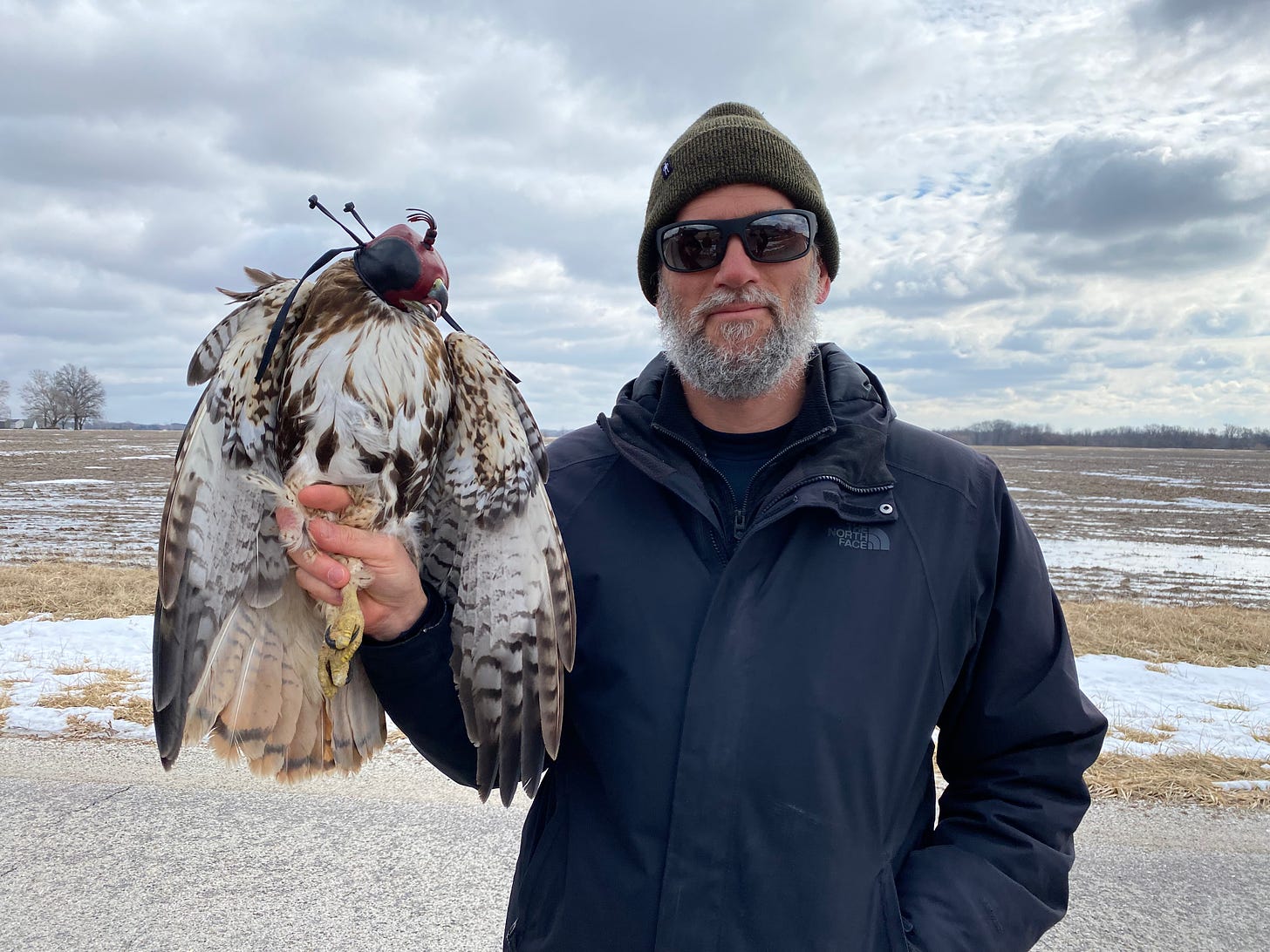
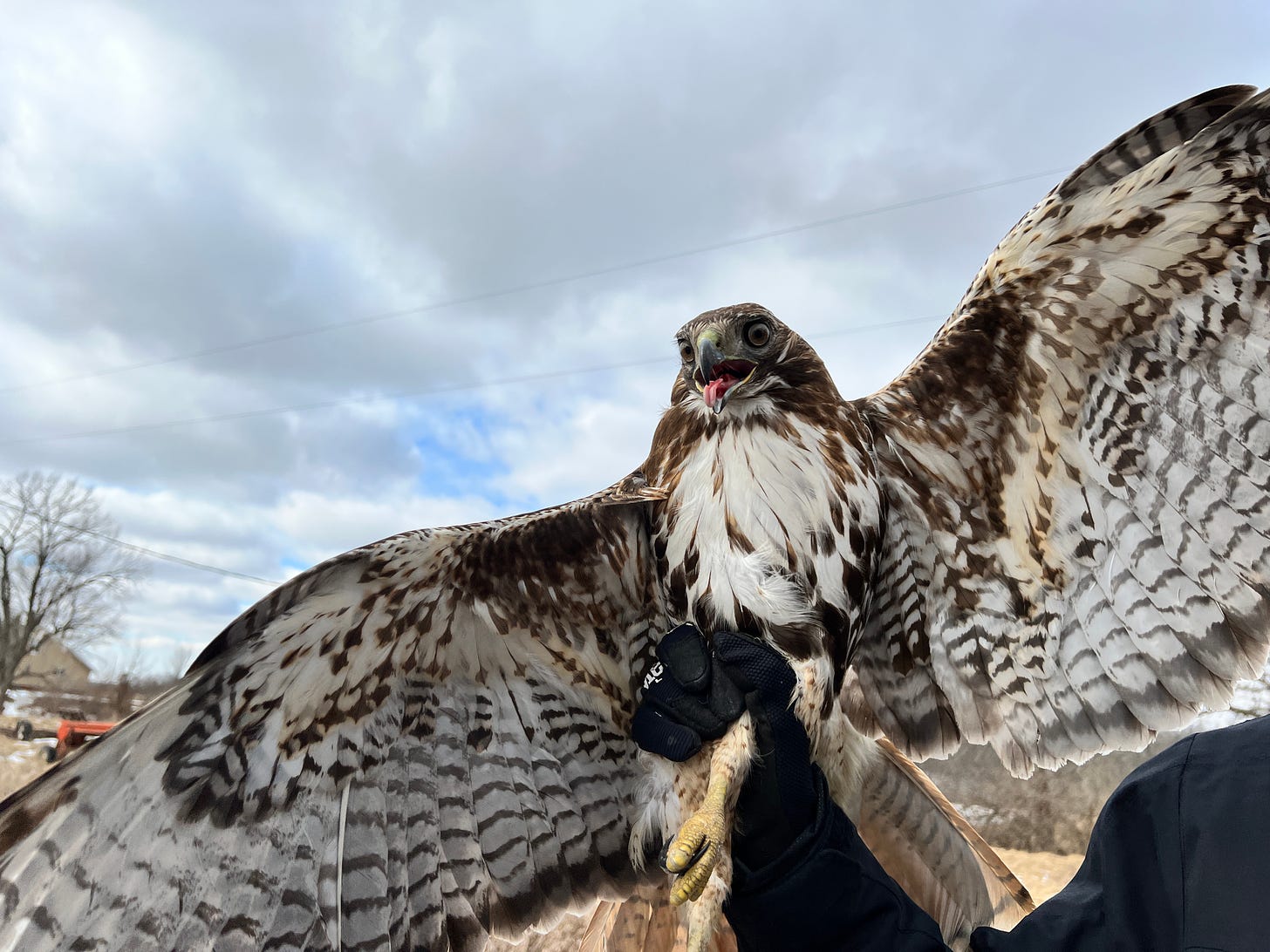
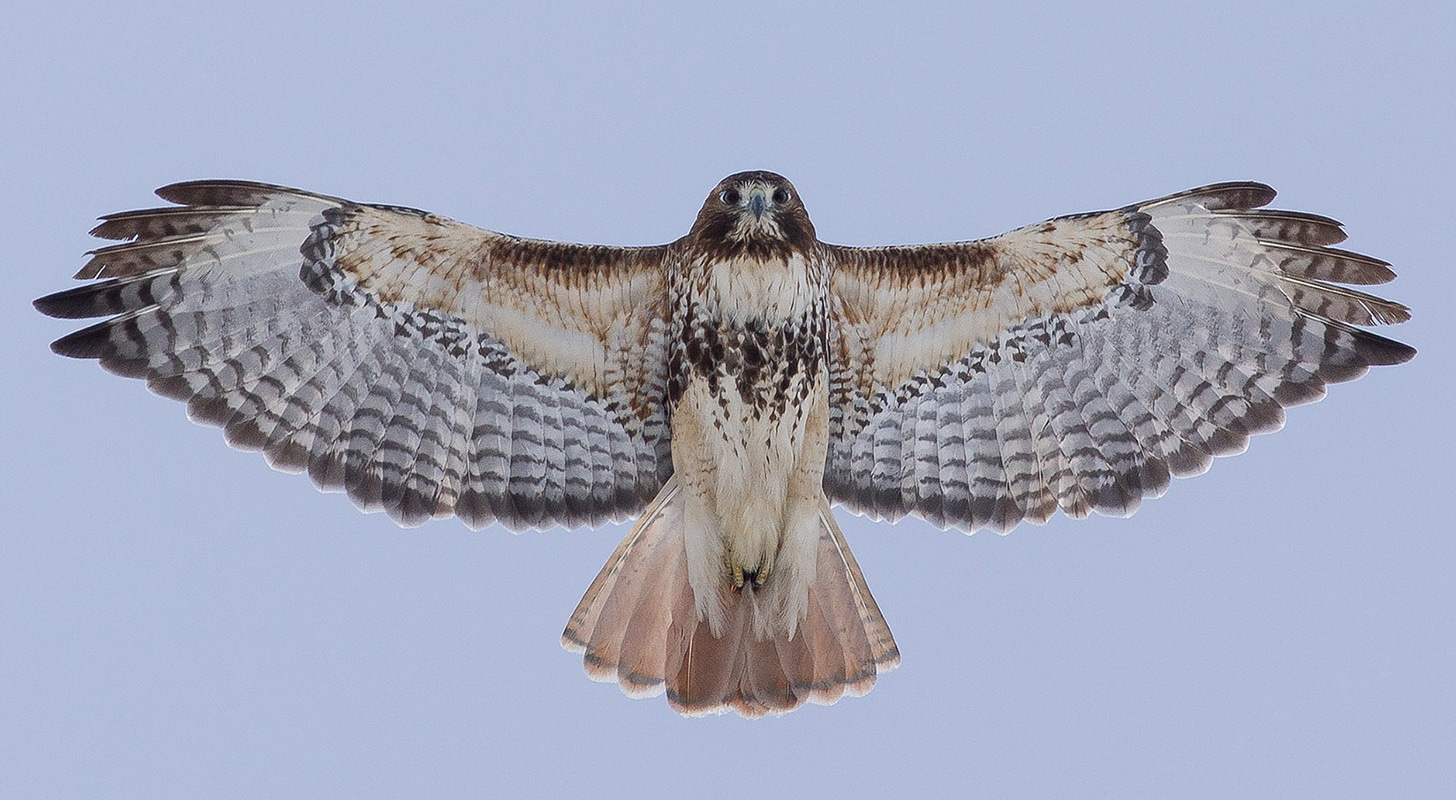
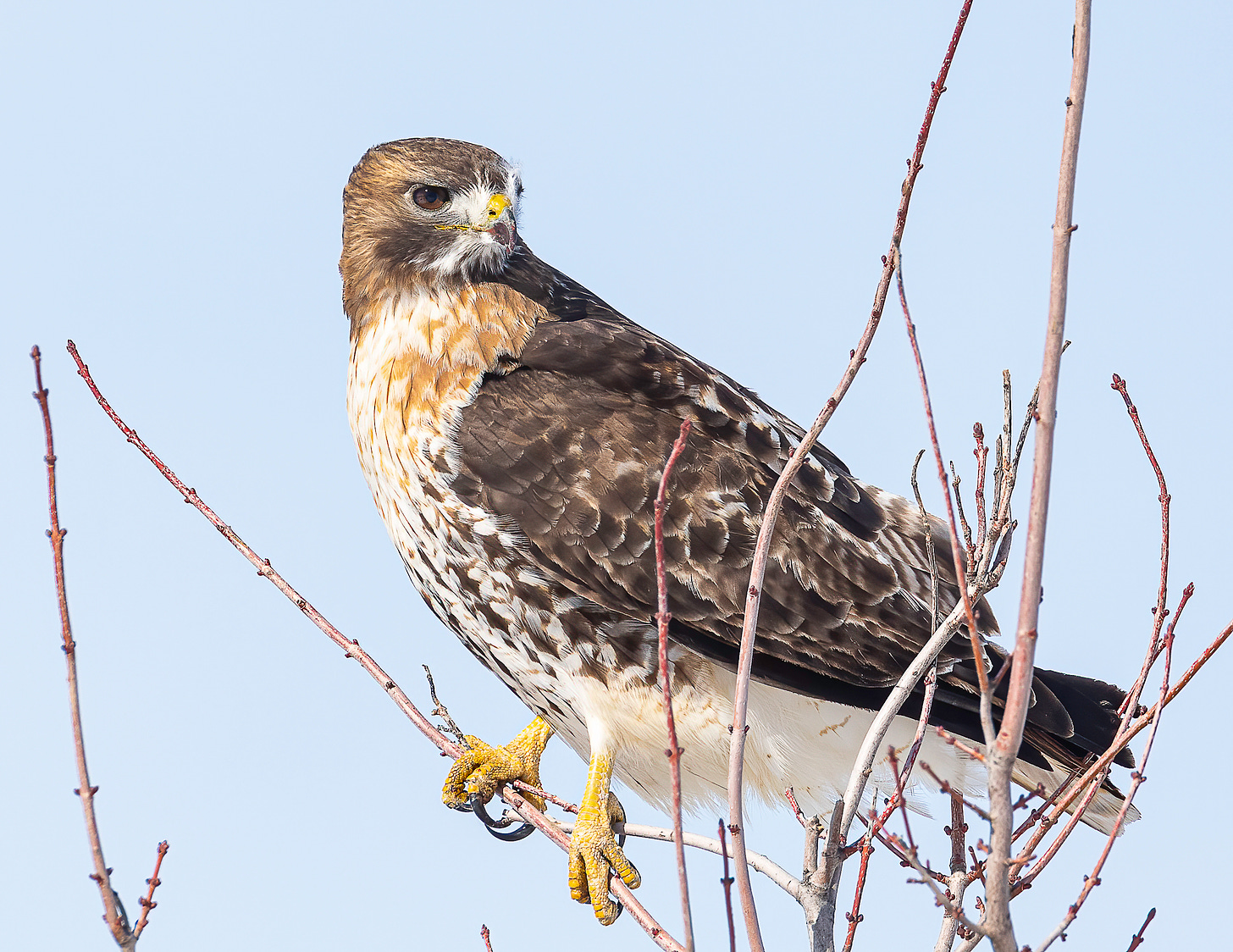
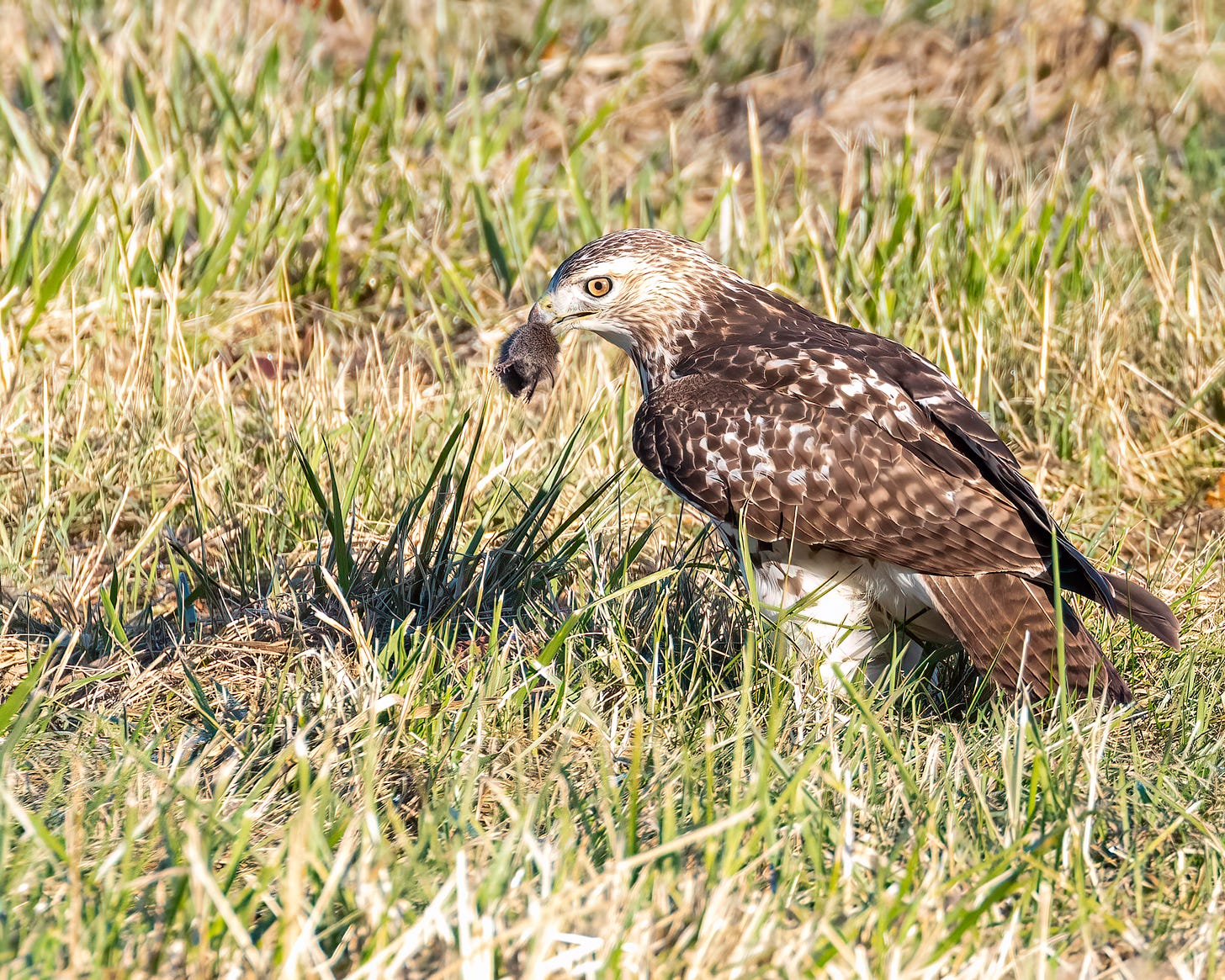
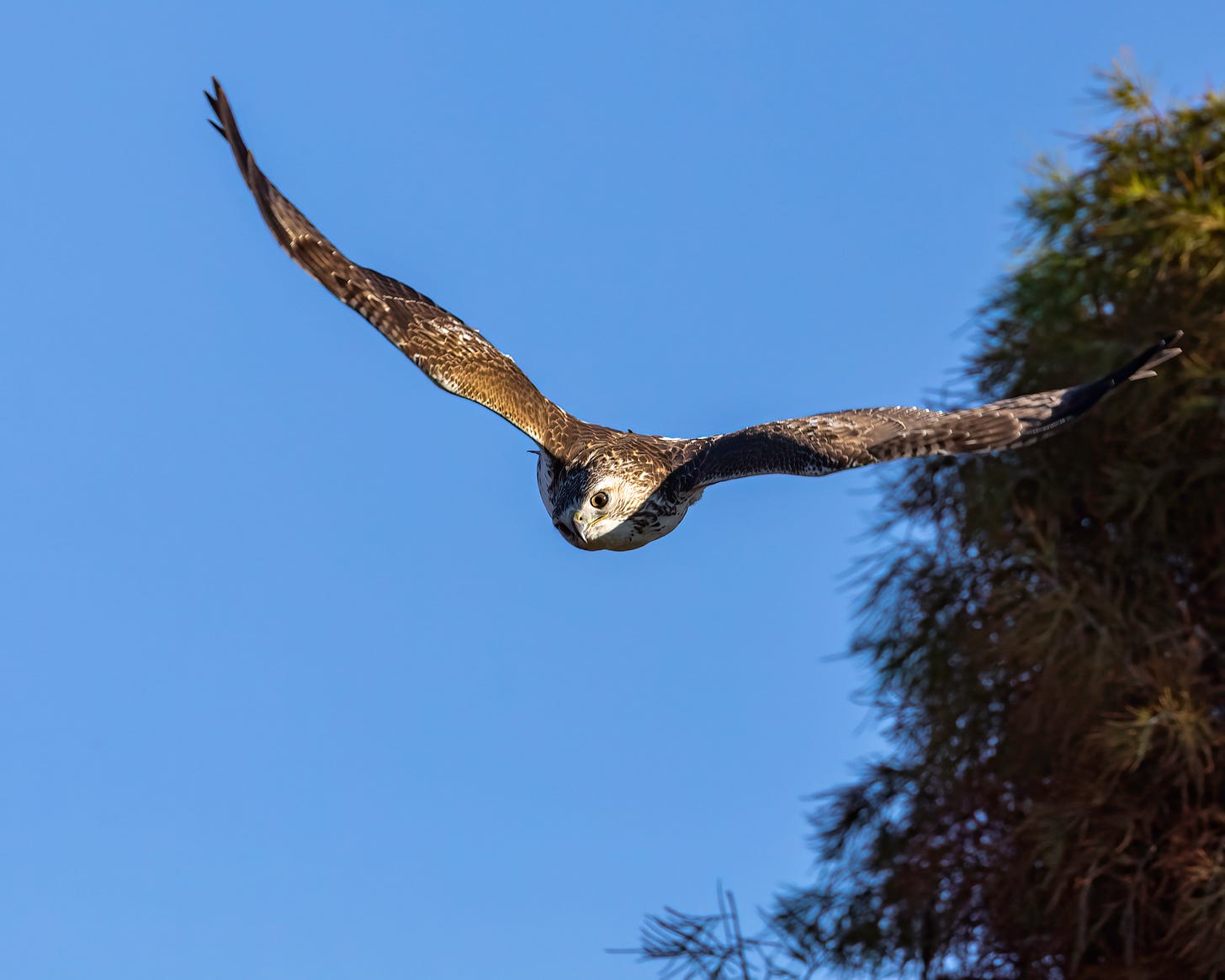
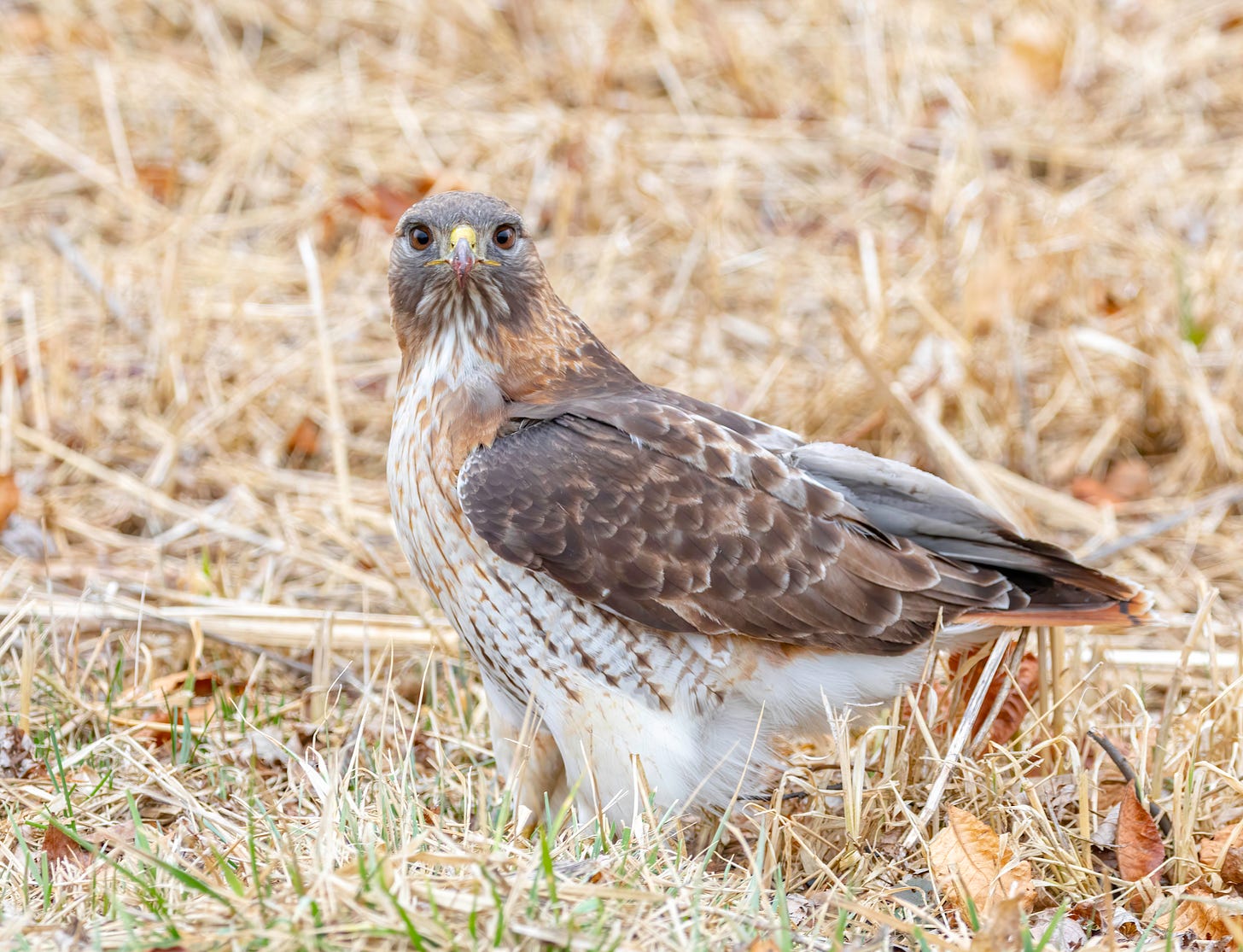
Your writing is lovely. Brings tears to the eyes and warms the heart beyond measure. They are always close and bring focus to what truly matters in life and being alive. Hope with wings soaring, dancing with grace on the invisible whispers that bring such effortless joy to my soul.
Thank you.
Even tho I rescue birds on the opposite side of this guy's food chain, I love all birds. Baby hawks are absolutely adorable. There almost furry like looking legs look like they have white bloomers on lol. Absolutely cuter than you can imagine a bird of prey being up close at that age. All babies are cute! When they grow up...they go from cute to magnificent. I do admire them but when I talk to them outside (which I do believe in bird enrichment even if they are wild). . . I tell them, "plz go to another grocery store". lol. Meaning, shop for their dinner in someone else's yard hahaha. I work in a plaza at a very well known retail store in Pennsylvania&in the UnitedStates in general. That is my job that actually pays me. It's sad...but most ppl who rescue animals don't ever get paid. They do it bc they love nature. Most rescue groups are short-handed on ppl as it is. This plaza LOVES TO POISON ITS RODENTS. I do not believe in killing "anybody". My husband and I talk about animals as they are ppl...so when I say that, I mean "anything" (but animals are NOT things). I tried to go at them with another approach. Most men even if they hate animals, think birds of prey are "neat, cool, awesome, or manly"& like them at least. I explained how they then get poisoned after the rodents ingest the poison and it is usually a very slow sad death. Thinking that would make them think. We are off of a MAJOR highway and there are plenty of hawks (and crows for clean up) that fly above. I explained that if they'd let them do their job mother nature put them here to do...the birds of prey would multiply and take care of the unwanted little guys (which that also makes me sad that ppl think of any wild mice as disgusting...but I get it there are restaurants near by). If ppl would let the FOODCHAIN do what it is supposed to do...there would be no need for all the poison, which in turn hurts way more animals than just rats or mice. Squirrels&rabbits I've seen hop out of these traps. It's absolutely heart breaking. Plz think before calling the orkin man 🙏 plz.